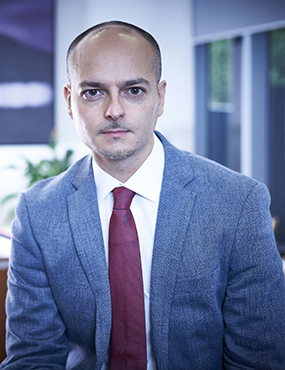Pioneering a next generation neurosurgical tool
In an Australian first, Macquarie Neurosurgery performed endoscopic-assisted microvascular decompression using an innovative 3D exoscope visualisation system.

Next generation 3D exoscope for surgery
Retrosigmoid facial nerve microvascular decompression is standard treatment for hemifacial spasm. Manifesting as facial twitching on one side of the face, the condition is caused by blood vessel pressing on the facial nerve. A similar (and much more common) condition is a kind of facial pain, the trigeminal neuralgia, caused by vascular compression on the trigeminal nerve.
Surgeons access the operative site via a small hole in the skull behind the ear to expose the nerve and separate very small but important blood vessels from it.
While the procedure is generally performed with a surgical microscope, an endoscope can be added into the surgical field. In Australia, Macquarie Neurosurgery is one of a few sites with surgeons trained in microscopic endoscope-assisted neurosurgery, which allows less invasive procedures and quicker post-operative recovery times.
Now, Macquarie neurosurgeon Professor Antonio Di Ieva has introduced the 3D Karl Storz exoscope, the first of its kind in the world. Macquarie Neurosurgery has been trialling the innovative visualisation system over several months, along with ENT and hand surgeons. The exoscope is placed outside of the patient and offers a great image resolution.
“We now have the 3D exoscope, which means the most realistic representation of a patient’s anatomy, in terms of depth of the surgical field. Moreover, the image is broader and brighter, allowing the surgeon to navigate in a safer way in the surgical field. The technology also magnifies and visualises important structures ‘around the corner’ in a much better way.”
Tasmanian resident, 55-year-old patient Peter Black was the first patient to have microvascular decompression with the new 3D exoscope. Peter had experienced facial spasm for the past five years and was not responsive to conservative treatment.
“I was diagnosed with facial spasm by an ophthalmologist,” said Peter. “I felt a constant tremble and heard a rumble in my left ear. It started impacting my life and work as I began avoiding eye contact with people.
“I tried Botox but that failed. I then saw two surgeons who gave me opposing viewpoints, the first saying decompression surgery was too complicated in my case because of the location of my blood vessels, the other not hesitating and claiming it would be easy to do.
“Needless to say, I was confused and so decided to seek a third opinion and that’s when I found MQ Neurosurgery.”
Professor Di Ieva, said that the procedure went well.
“I performed the operation with 3D glasses, watching it on two videos in front of me – one visualising the exoscopic image in 3D, the other an endoscopic image in 2D,” he said. “At the end of the procedure, I also used the microscope, in the standardised fashion, to compare the images and to be sure of the results.
“The procedure was uncomplicated and successful. Peter has no new deficits and has had no more twitching. Of course, there is still a relatively small chance of recurrence over the next months or years, but for now he is very happy.
The same procedure can be applied for other kinds of microvascular decompression, such as for the treatment of trigeminal neuralgia, as well as for the resection of brain and skull base tumours, such as meningiomas and schwannomas."